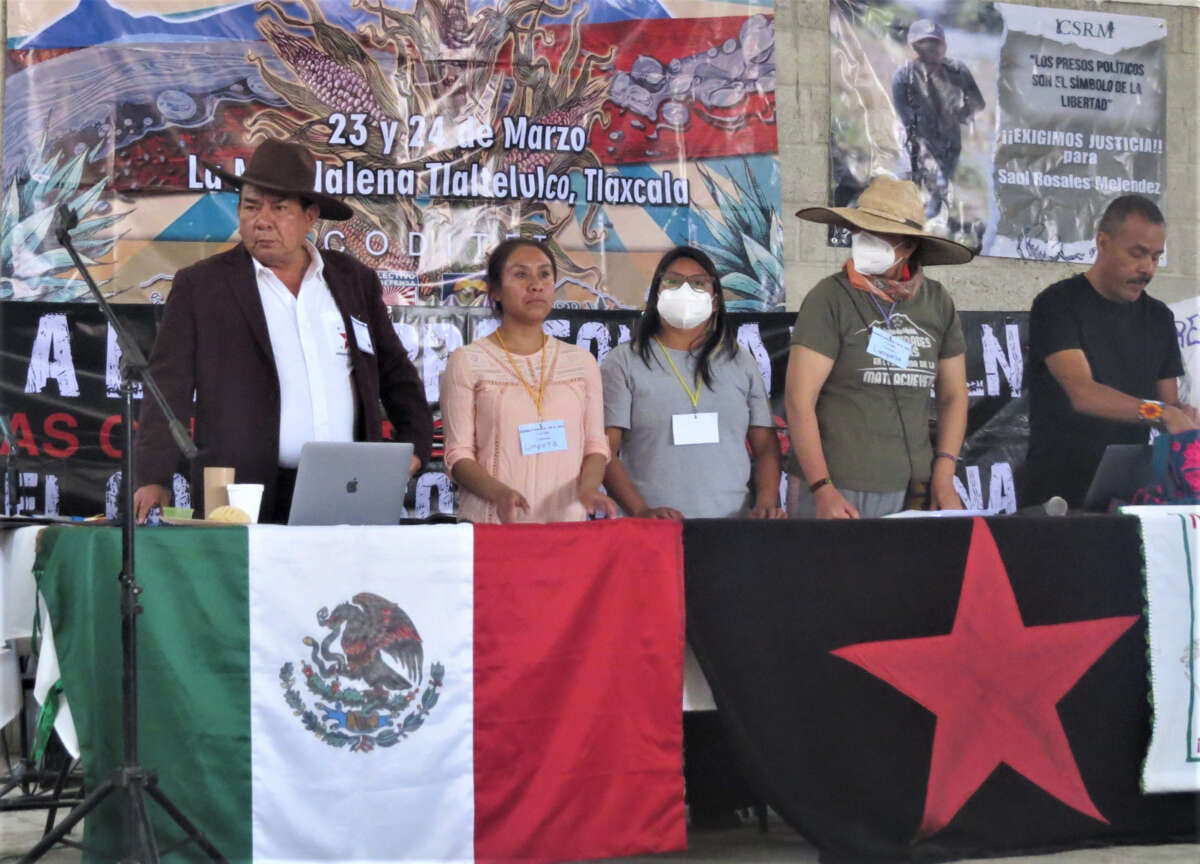Like a 68-story glass-clad monument to imperialism, the Mítikah tower is now the tallest building in Mexico City. Operating since 2022, it was designed and built by U.S. and Mexican real estate and architecture companies, including Fibra Uno, Parks Hospitality Holdings and Pelli Clarke & Partners. It is the biggest shopping complex in the city and also features residential and office spaces. By not recognizing locals as original peoples with Teotihuacan descendancy, authorities were able to avoid the legally required consultation before approving its construction. Now, water — a scarce resource in Mexico City — is being redirected to the luxury building, while locals are left without.
Avoiding community consultation is just one of the strategies real estate companies are using to build and profit, while displacing people and destroying environments throughout Mexico. These corporations are using a combination of corruption, ties with organized crime, intimidation tactics, forced evictions and some allege arson, to clear the way for them to build their empires.
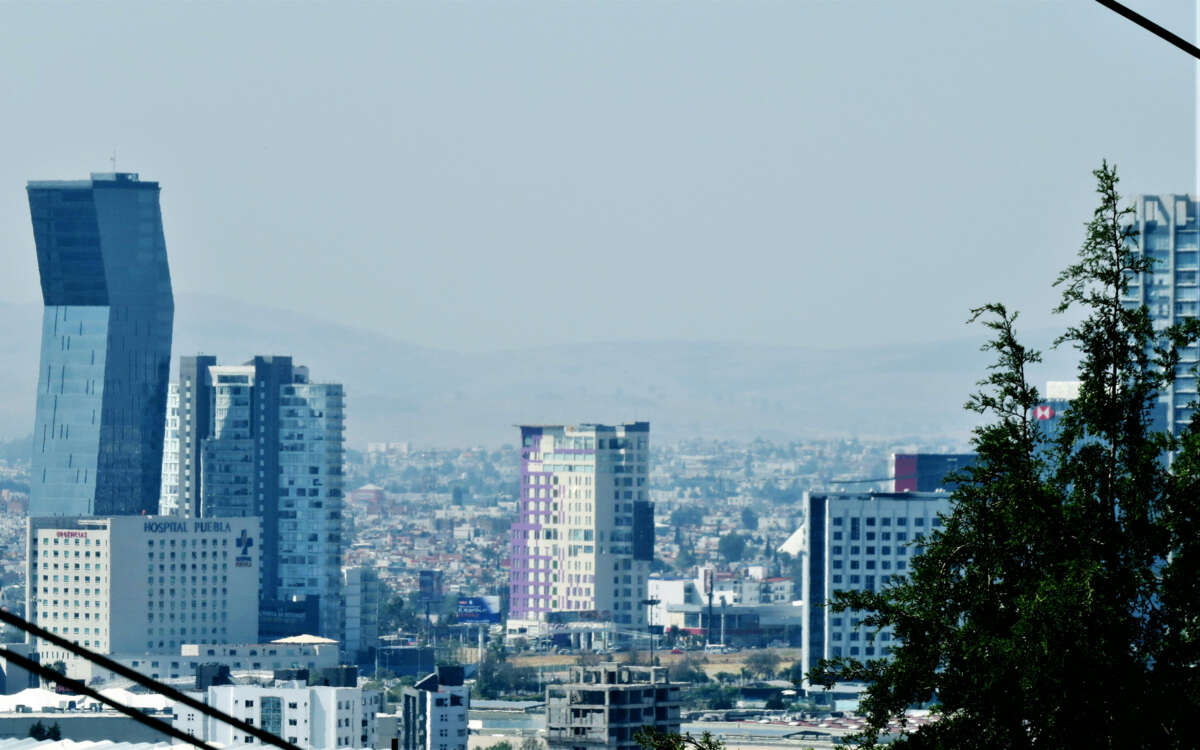
Real Estate Mafia Methods
Just five kilometers from where I live, to the east of Puebla City, activists, locals and La Jornada newspaper have accused the real estate industry of paying people to start nine recent fires in the La Calera eucalyptus forest. Locals told La Jornada they saw men with gasoline drums entering the area, and that getting rid of trees could force a change in land use and a loss of protected status. The fires are happening right after locals and activists rejected municipal plans to increase the housing density in the area from 36 to 200 houses per hectare. The Social Well Being Collective, which aims to defend Puebla’s rivers and environment, alleges that some 20 real estate companies have obtained permits to build in the nature reserve, in violation of municipal regulations.
Similarly, on March 27, activists closed a road to denounce what they say were intentionally set forest fires to the east of Mexico City allegedly caused by real estate companies seeking to build in the area. In nearby Jilotzingo, communal land owners and small farmers had spoken out against a court ruling favoring a company that they said is seeking to build luxury housing estates on their land. They alleged the agrarian court and a district judge were protecting the company and allowing it to commit ecocide. Two weeks later, 500 hectares of land in Jilotzingo were destroyed by fires, and locals suspect they were also intentionally set.
Companies also “look for legal loopholes,” said Mexican researcher and doctor of urban land management Melissa Schumacher Gonzalez, in an interview with Truthout. She said a core tactic was divide and conquer, in which developers, “buy land, and if someone doesn’t want to sell, they isolate them, cut off their access to the street, to force them to sell.”
“Real estate spending has a lot of freedom because it is one of the only ways to finance city growth, while authorities often aren’t concerned about coherent, sustainable development,” she said, alluding to the low public budgets that are common in poorer Global South countries.
Real estate has “become an easy way to get rich,” she said. The value of property per square meters has multiplied around tenfold in a decade, making speculation very profitable, and affording those companies the power and means to buy off authorities.
“The government is a mafia. There’s little difference between it, the narcos, and the companies. It’s basically a corporate narco state … where everything is merchandise and illegal actions are passed off as legal,” Lila told Truthout. A member of Frente por la Defensa de los Derechos de los Pueblos y Barrios del Anáhuac (Front in Defense of the Rights of the Peoples and Towns of Anáhuac, or FDDPBA), an organization of Indigenous communities in Mexico City that fights for Indigenous rights and the environment, she asked for just one name to be used, out of fear of reprisal.
Lila described an “implicit threat” against activists and original peoples, as “both direct and indirect persecution, from direct death threats through to following people and fabricating charges.”
In Tlaxcala state, a Nahuatl community leader and Land Defender, Saúl Rosales, fell victim to trumped-up charges and was sent to prison for 50 years in March. Fellow Tlaxcala activist, Nohemí Salgado, whose name has also been changed, alleges municipal authorities in her town are colluding with a real estate company, that any public works like electricity and water that are approved are for the benefit of that company, and that people involved in organized crime are living in the new houses.
These corporations are using a combination of corruption, ties with organized crime, intimidation tactics, forced evictions and some allege arson, to clear the way for them to build their empires.
Salgado is of Nahuatl origins and a member of the Collective in Defense of Tlaltelulco Land, an organization of locals which fights for their rights and defends land and their way of life. Her town of La Magdalena Tlaltelulco is one of three municipalities in Mexico with the least access to tap water at 8.77 percent.
“Most of the houses for sale here belong to the mayor’s company,” she told Truthout. People in the community are “normally fighters, and if the mayor does something wrong, they go and close their office, but with this mayor, there are rumors he is linked to drug traffickers and everyone is too scared.”
Local media outlets have denounced Mayor Marco Pluma for allegedly diverting public funds to private companies and for hiring people who are involved in organized crime for law enforcement. Locals say the situation has seen an increase in robberies and extortion in the area.
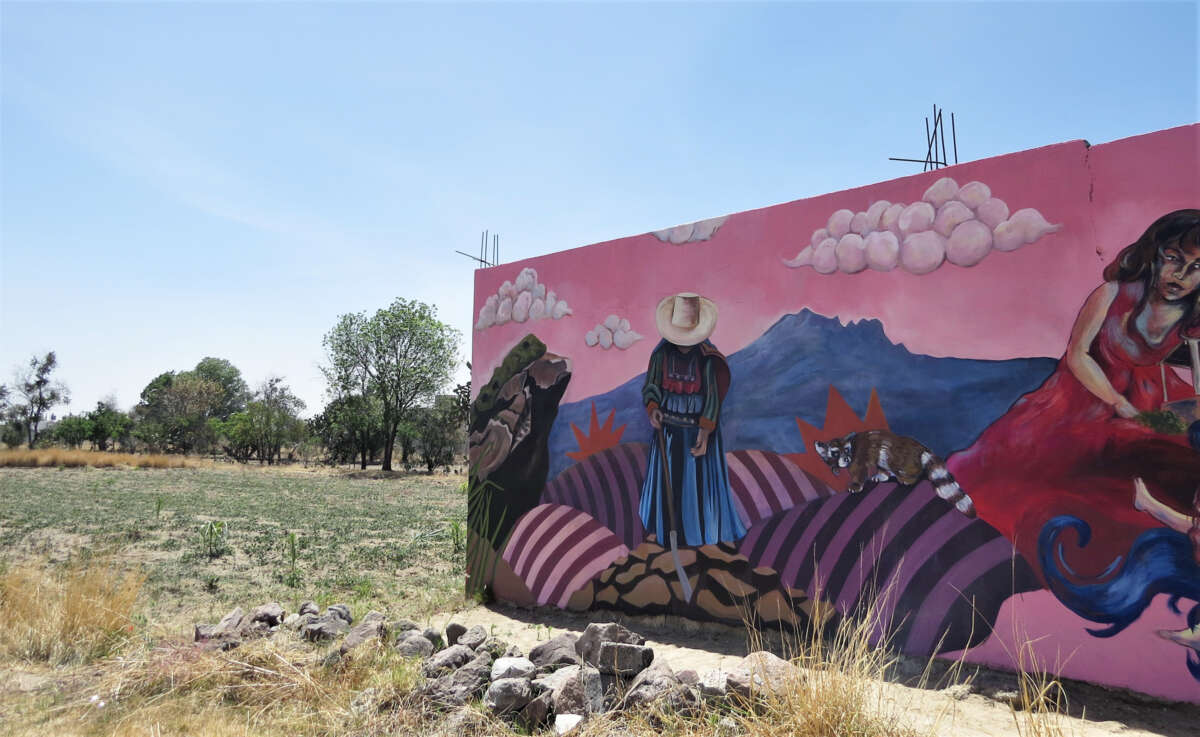
Building Little U.S. Empires in Mexico
I’ve only been to the wealthy side of Puebla City, “Angelopolis,” a few times, because I find it disorienting, and you can really only get around it in a car. Consisting of gated communities, unsightly and pretentious towers, and giant car parks surrounded by mostly U.S. chains like McDonald’s, Nike and Sears, the area was built up on what was once Indigenous communal land and farming areas.
“Angelopolis was planned based on a U.S. study,” said Schumacher Gonzalez. Records show the area was designed by Texas companies HKS Architects and Sasaki. It has a U.S. style of zoning, with wide roads and a lack of street benches, public spaces and public transport, she said. She argued that the U.S. and the North American Free Trade Agreement are associated with modernity or a “benchmark lifestyle,” and the real estate company Grupo Proyecta “subcontracted companies from the United States” to build and continuously expand Angelopolis today.
Grupo Proyecta has been denounced for paying ejido (common) land owners 4 pesos ($0.25) per square meters to build much more expensive housing, then leaving those residents without water as it is redirected to the pools and gardens of the luxury properties.
A small group of original peoples who remain in the area, organized into Cholultecas United in Resistance, are going to court to defy the attempts to evict them from their land. The group recently said in a press release that the decades-long “real estate invasion” has expropriated over 1,000 hectares from seven original communities. “Companies like Grupo Proyecta have evicted original peoples from their properties via fraudulent trials, based on fake title deeds, tricks, and pressure,” they alleged.
“Ultimately, these types of developments are designed for people who are white, straight, cisgender. They aren’t at all planned for children, the elderly or for vulnerable groups,” said Schumacher Gonzalez.
The U.S., followed by Spain and Canada, is the top foreign investor in real estate in Mexico. Hotel chains are highly profitable, with Hyatt being one of the biggest revenue earners. Nearshoring, a practice where U.S. companies use Mexican resources and exploit workers here then send the products back to the U.S., is a core driver of industrial real estate development. Billion-dollar brokerages like The Agency are set to profit from the growing resort real estate market.
“The real estate construction is for housing that most people here can’t afford…. It is leading to the dispossession of our homes, memories, languages, and food.”
So it’s no coincidence that the CEO of Parks Hospitality Holdings, which partners with Hilton and developed the above mentioned Mítikah tower, is owned by Charles El-Mann Fasja, who also owns E-Group. E-Group is building a massive project that was initially called the T-MEC Park, named after the neoliberal, unequal trade agreement between the U.S., Mexico and Canada (USMCA in English). The industrial and logistics complex is the size of a town, and located near a new airport to the north of Mexico City. Still under construction, and promoted as the new biggest industrial park in Latin America, nearby municipalities are already protesting water scarcity they say is caused by the neighboring airport.
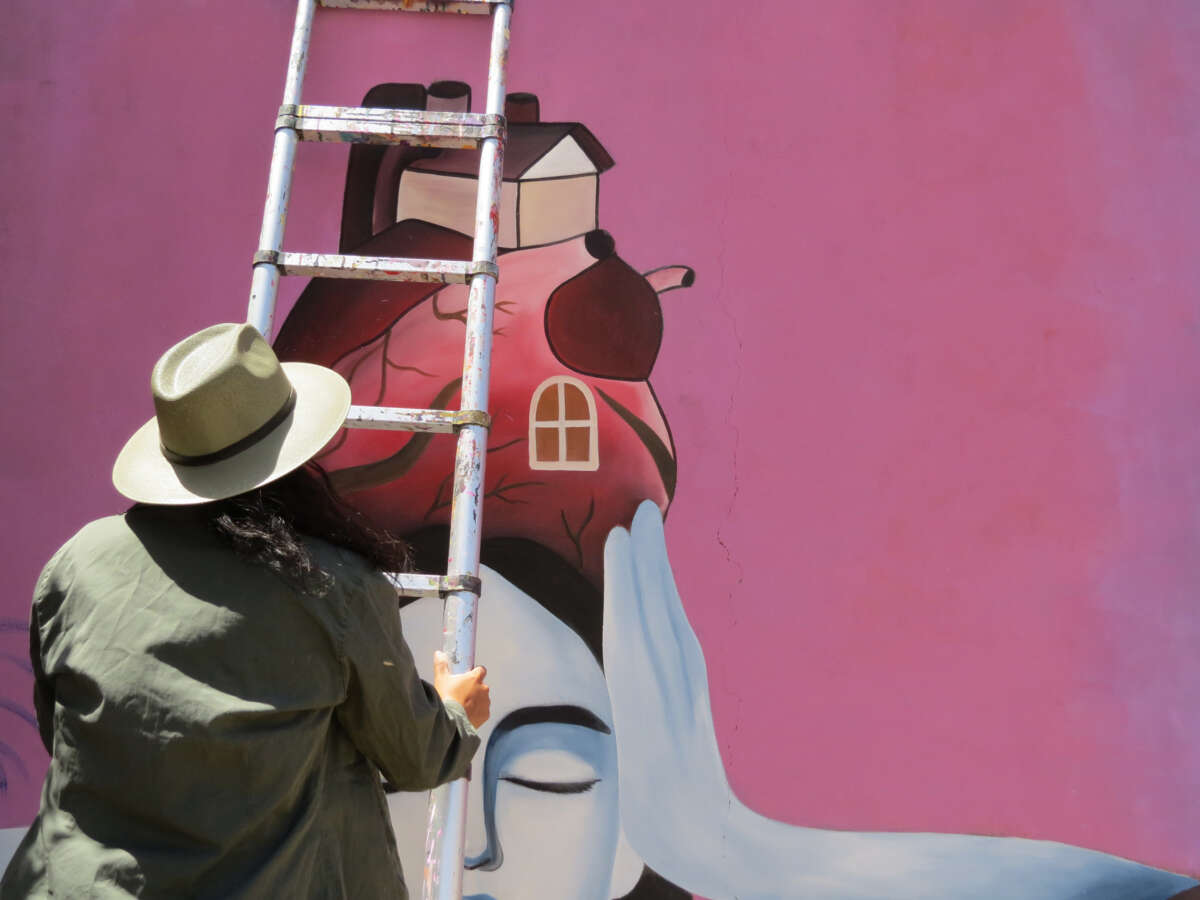
Gentrification in Mexico Is Really Just Modern-Day Colonialism
A spate of recent news coverage has highlighted the many people from the U.S. moving to Mexico, and the corresponding increase in rent and prices in some neighborhoods. But the trampling on local customs begins with real estate construction, long before these gentrifiers arrive. Racism is enforced as real estate companies buy land cheaply, destroy local culture, and rent or sell to businesses that will give the area a “modern” or Western look in order to attract wealthier white people and tourists.
Mexico City is being fought over “between real estate capital and citizens, original peoples and communities who defend the water, air, and public spaces,” argued Lila’s organization, FDDPBA, on X (formerly Twitter).
“The problem is historic, ancestral. The stripping of our languages, of our land, our territory, dates back to the invasion of the region,” Lila said. Her group recently defeated a city plan, called the General Land Use Planning Program, to “divide up the city like sharing out the cake; the real estate goes here, the shopping center there.”
“The real estate construction is for housing that most people here can’t afford…. It is leading to the dispossession of our homes, memories, languages, and food,” she said, explaining that chain or corporate restaurants with different eating styles, food and price points were replacing family-run eateries that use Mexican corn, sauces and tortillas.
Likewise in Tlaxcala, Salgado says that real estate construction has “advanced a lot over the last five years, and what they are doing is modifying and accelerating the process of loss of identity within the community.”
Ironically, it is this very loss of identity, she says, that has “facilitated people’s readiness to sell their land.” A nearby industrial corridor has seen many people leaving their farms to work in factories like the nearby LIXIL (American Standard) industrial plant. “Now people prefer to work in a factory because they see it as bringing more status,” Salgado said.
“Real estate companies dictate everything,” said Schumacher Gonzalez. “The latest urban development plans are clearly done for the benefit of real estate companies, not the people,” she said, pointing out new developments don’t include water treatment or water capture facilities, nor trees. “A lack of trees reduces the amount of rain…. All these residential estates and shopping areas are becoming huge heat islands,” she said.
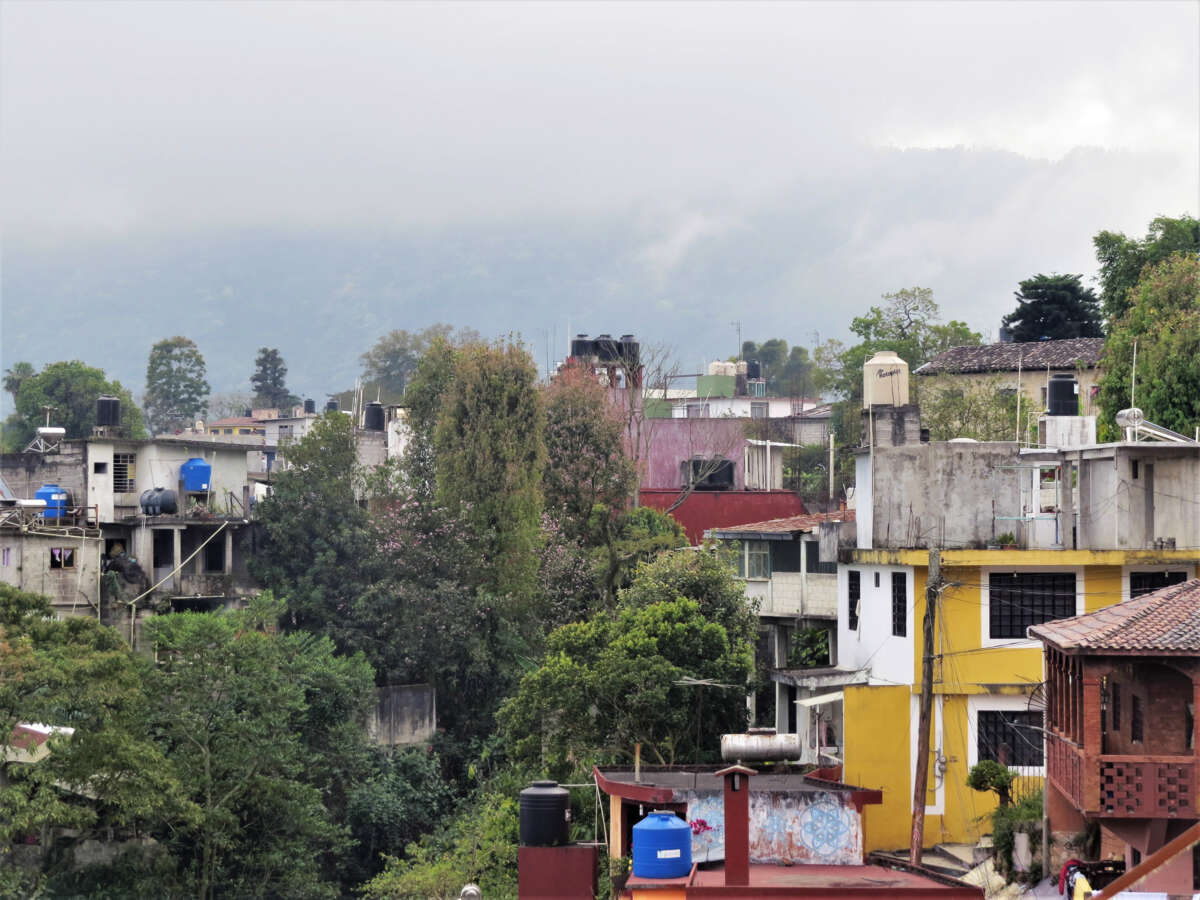
Resistance and Victories
“They try to turn our land into a business,” said Salgado, “but the need to stay alive, to maintain our ways of organizing and living in community means we are united in defending what our grandparents defended.”
Lila’s group, the FDDPBA, was able to defeat the pro-real estate city plans in December. She said they managed that by applying pressure through media campaigns, blocking roads, marching, going to court, holding people’s assemblies, emailing local deputies and collecting 20,000 signatures.
“We’re not going to give up, we’re not going to sell out,” Lila promised. “The resistance is going to continue because we’re fighting … to continue honoring and dignifying this life, and we’ll do it at any cost.”
Thank you for reading Truthout. One brief but important thing before you go.
For over 20 years, Truthout has been publishing boldly honest journalism like the piece above – stories about and by grassroots activists, reports from the frontlines of social movements, and unapologetic critiques of the systemic forces that shape all of our lives.
Monied interests prevent other publications from confronting the worst injustices in our world. But Truthout remains a haven for transformative journalism in pursuit of justice.
We simply cannot do this without support from our readers. At this time, we’re appealing to add 50 monthly donors in the next 2 days. If you can, please make a tax-deductible one-time or monthly gift today.
